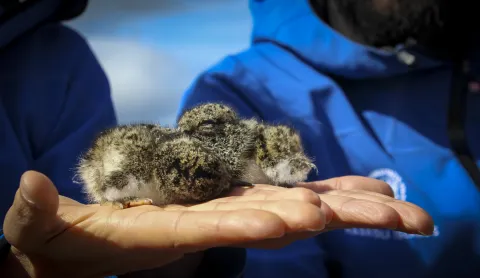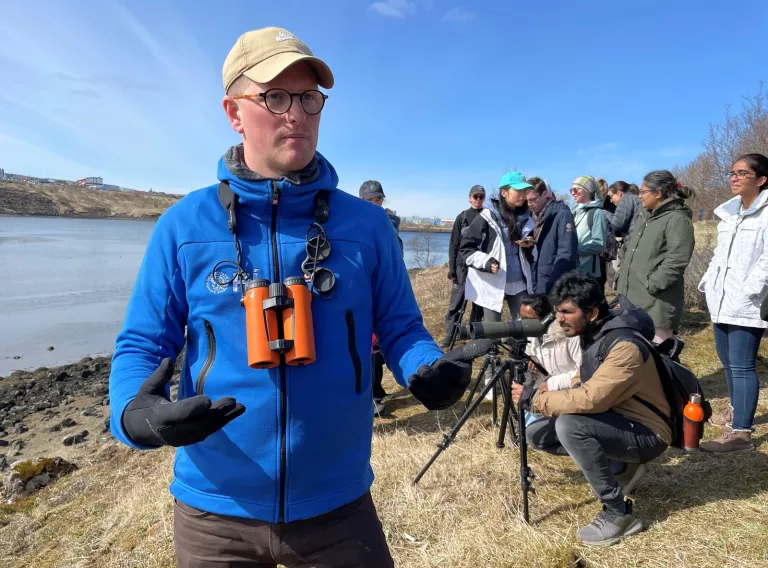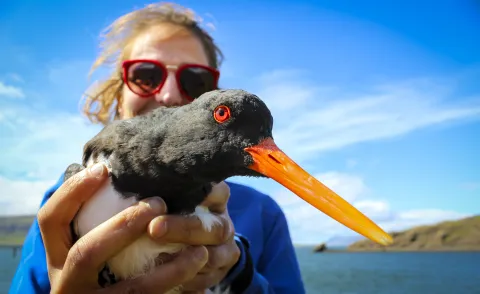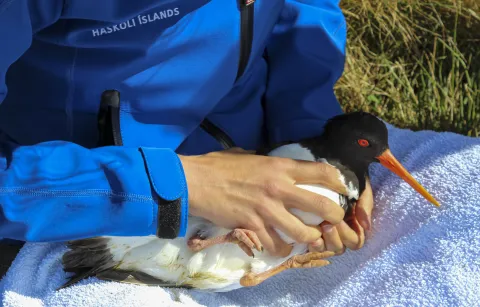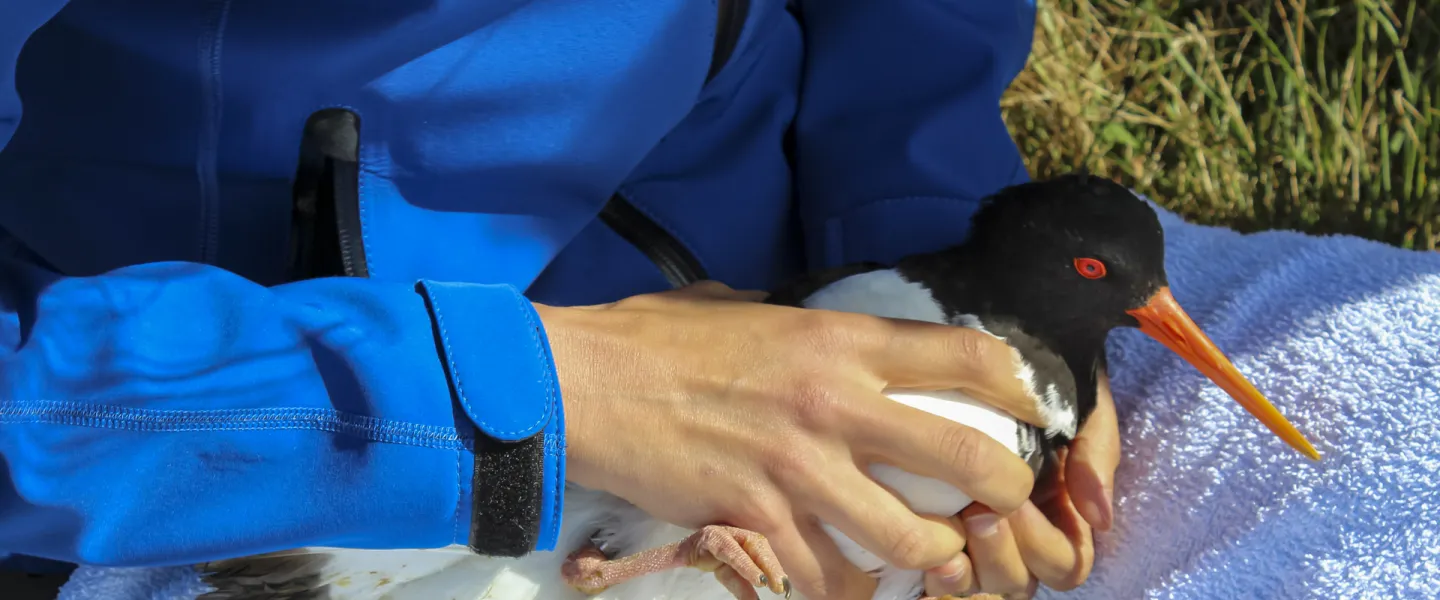
The oystercatcher is a common sight in Iceland, instantly recognisable with its striking black and white plumage, its long, orange beak, and its long, orange legs.
"Icelandic oystercatchers are most often found in one of two habitats during the summer breeding season. Some birds prefer to remain close to the shore and the beaches, where they mainly feed on mussels, cockles, lugworms and other intertidal invertebrates. The rest of the population seeks out farmland and moors further inland, particularly in South Iceland, where they feed on worms and insects," explains Sölvi Rúnar Vignisson, whose PhD project is all about oystercatchers. His research looks at the migratory behaviour of the birds and how this behaviour affects their demography. Sölvi Rúnar has worked as an ecologist at the Suðurnes Science and Learning Centre since 2013. Most of his research there has focused on birds or coastal environments.
